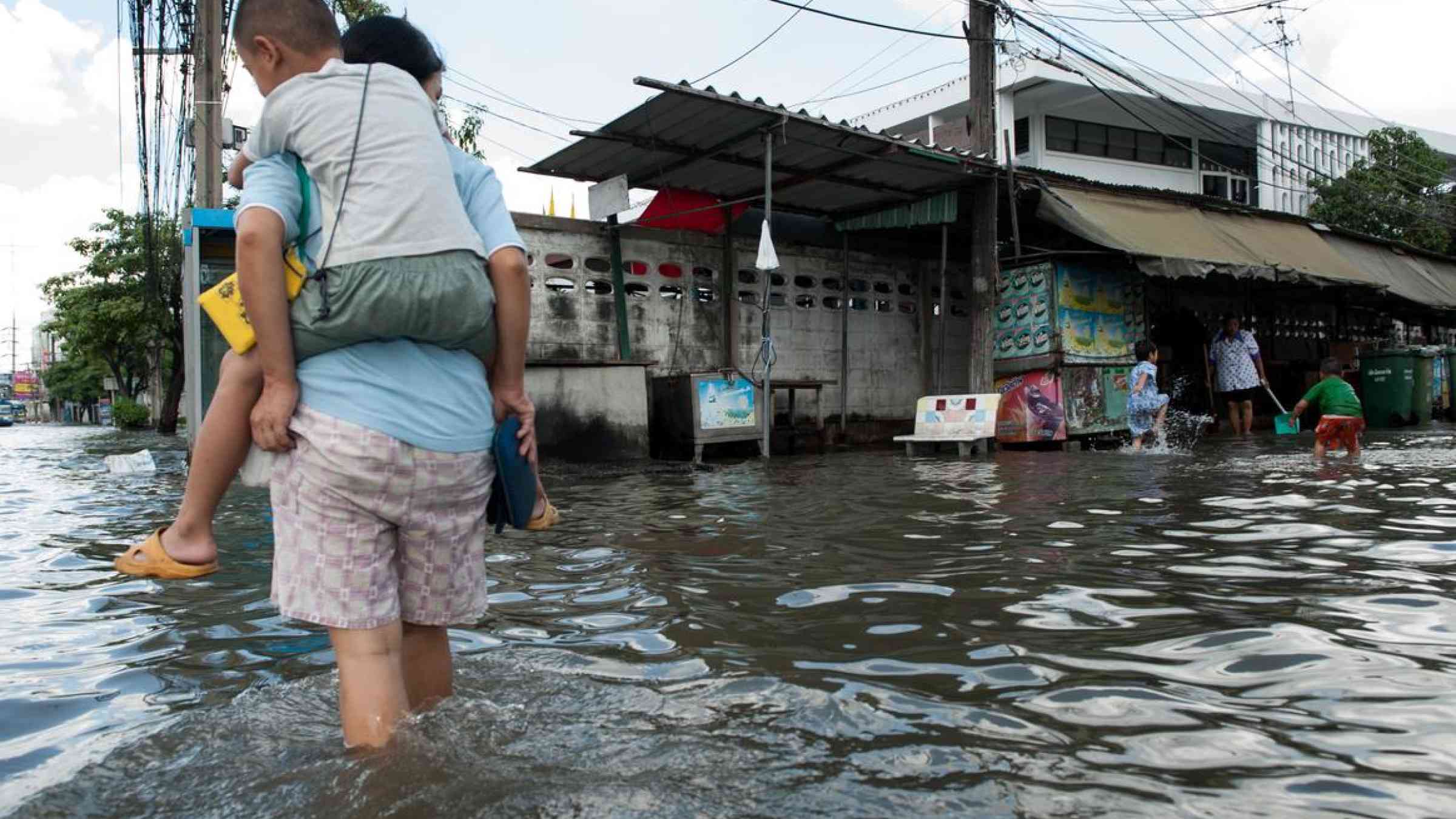Governance at the heart of transformative disaster risk reduction

“In many ways, the COVID-19 pandemic is forcing actors to re-think how to manage risks, whether natural or man-made. Risks are systemic and the root causes of vulnerability lie in unsustainable development practices – we can no longer label disasters as ‘natural’. If we are to succeed in transforming the relationship between development and risk creation, we have to start by making governance processes more evidence-based, inclusive and equitable”
— Michael Boyland, Lead of the IRDR International Centre of Excellence on Transforming Development and Disaster Risk, SEI
Evidence-based decision-making
Governing risk is the business of all sectors of government, not just the disaster management ministries, offices and committees. And while states have primary responsibility for reducing risk, multi-stakeholder action involving civil society and the private sector is an essential part of adaptive risk governance.
The decisions made and actions taken in the name of risk management must be evidence-based if they are to be effective. Science and policy coalitions are one mechanism for promoting informed decision-making, examples of which include the Integrated Research on Disaster Risk (IRDR) network and the PEDRR platform on nature-based solutions, which SEI currently co-chairs.
Yet governing systemic risk is a daunting and complex challenge facing decision-makers across the globe. SEI has been working to unpack the inherent trade-offs in decision-making around risk and development, based on science and empirical evidence. Emerging out of our research and stakeholder engagement in Asia, we have also produced actionable guidelines for planners to better align development and DRR goals.
It is also important to ensure that risk governance, guided by the Sendai Framework for Disaster Risk Reduction, is more joined up with climate action, for instance by being linked to the Paris Agreement and the Sustainable Development Goals (SDGs). SEI’s Connectivity Hub is a tool to help streamline evidence and ultimately make risk governance more coherent. As an additional challenge, in the age of social media, there are new opportunities for (but also threats to) knowledge production, social learning and DRR governance.
Equitable resilience processes
Governance is a multi-layered, cross-scale endeavour. When it comes to DRR governance, decisions made at the community or local level can be just as consequential for people facing increasing risks as a new national policy or governing body might be. It is therefore essential that those on the frontline of disasters and climate change are brought into governance processes in meaningful and effective ways.
The “Building resilience through inclusive and climate-adaptive DRR in Asia-Pacific” programme is working to facilitate more empowering and equitable resilience action through stronger integration of gender equality and rights-based approaches in DRR and adaptation. We find that equitable resilience is proving a powerful framing for addressing some of the shortcomings of resilience-building efforts by bringing rights and justice to the fore and promoting systems transformation.
For too long, certain groups have been excluded from DRR governance processes, or “left behind”, and this recent review highlights how implementation of the Sendai Framework can be more gender-responsive and disability-inclusive. SEI is also supporting platforms and dialogues in Asia-Pacific for bringing the voices of children and youth, along with non-normative genders and sexualities, to DRR and climate change governance spaces.
Finally, the transboundary nature of risk means we must continue to emphasize the importance of cross-border and cross-scale risk governance, an aim being pursued by the Adaptation Without Borders Initiative. The movement of people, whether driven by risks and disasters or as an adaptation strategy, is one such example of the challenge of transboundary risk governance and a new project, HABITABLE, will explore the connections between risk, adaptation and migration.
Transformative DRR is not possible without effective governance. This year’s International Day for DRR, being commemorated in the midst of a global pandemic, is an opportunity to reflect on how, and for whom, effective governance works. At SEI, we will continue to support more evidence-based, inclusive and equitable governance processes for tackling systemic risks across scales and across the globe.